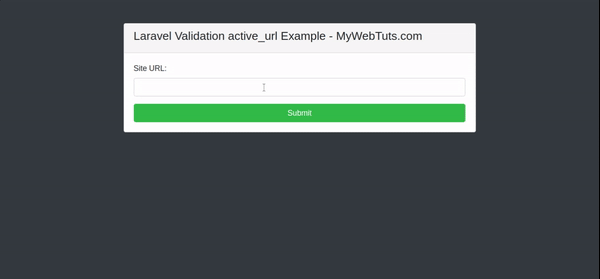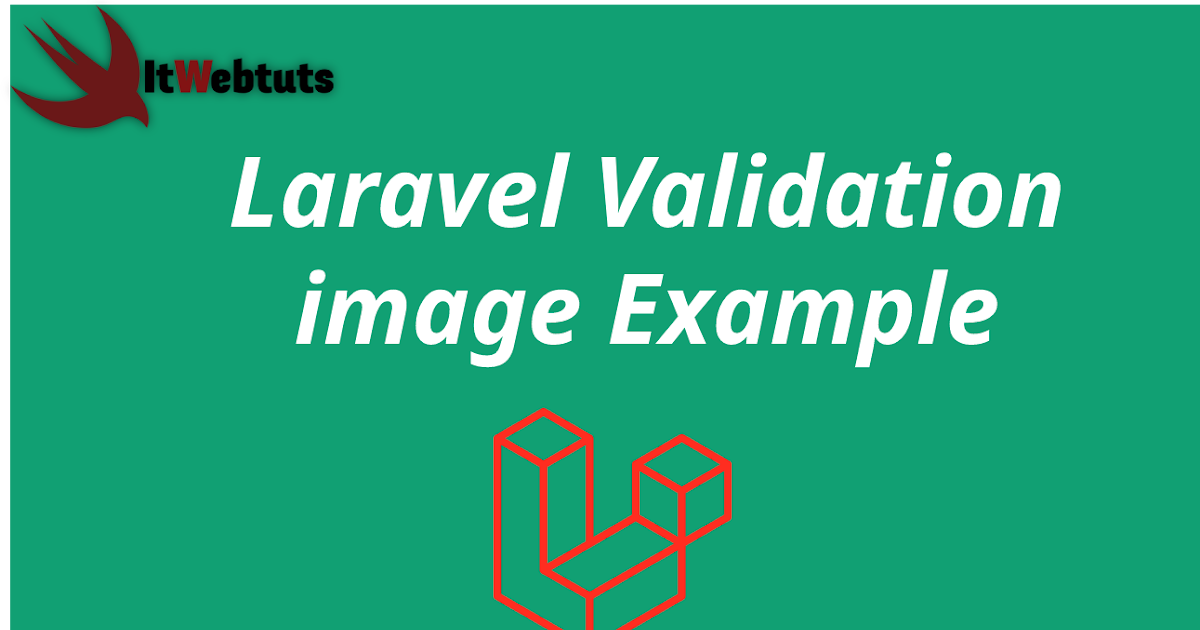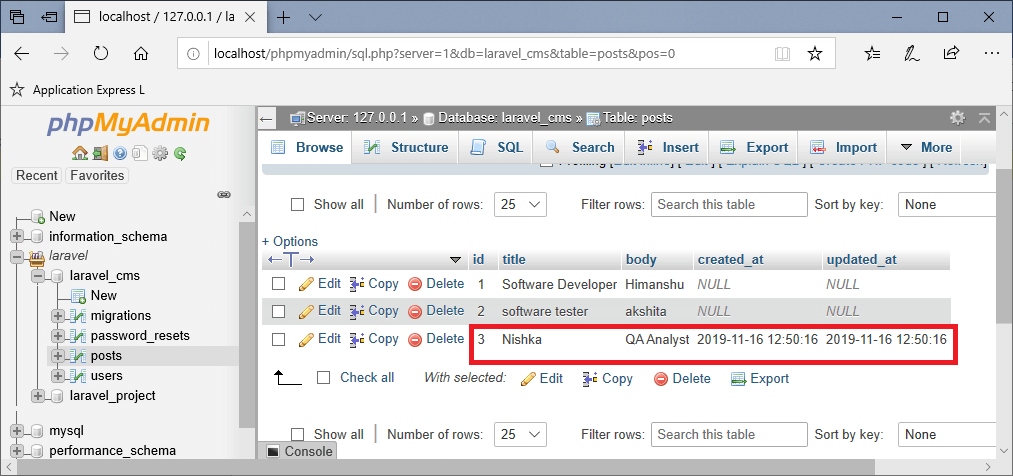

We believe that this process of writing and testing custom validators in Tinkerwell is much easier than doing it in your project directly. Putting it all together – this is how you write it in Tinkerwell directly. In the last step, we call the validator and see if there are any errors. A $fail callback that Laravel calls if the validation fails.The $attribute itself that we want to validate.failĪfter that, we create the validator, add standard rules and write the function for our custom validation. This could also be a request object or other more complex data – but we keep it easy for now. In this example, we create a basic validator function to make sure that the title of a blog post can't be set to "foo".Īt first, we create a dummy object which provides the data for the validation and prepare examples with data that pass or fail validation.

Laravel eloquent create validate request code#
Even when writing the validator in isolation in a scratch file of your IDE, you still need to run the code in your browser or via CLI – a task that requires to switch applications. When validating request data, triggering the request requires switching between the browser and your IDE a lot. Within this middleware's hosts method, you may specify the host names that your application should respond to.Writing custom validators in Laravel is a common task that most Laravel developers do regularly. The TrustHosts middleware is already included in the $middleware stack of your application however, you should uncomment it so that it becomes active. In the following example, the model if no user is attached to the. This pattern is often referred to as the and can help remove conditional checks in your code. relationships allow you to define a default model that will be returned if the given relationship is. However, if you do not have the ability to customize your web server directly and need to instruct Laravel to only respond to certain host names, you may do so by enabling the App\Http\Middleware\TrustHosts middleware for your application. So, in this example, Eloquent will assume the models foreign key on the. Typically, you should configure your web server, such as Nginx or Apache, to only send requests to your application that match a given host name. In addition, the Host header's value will be used when generating absolute URLs to your application during a web request. Typically, the skipWhen method should be invoked in the boot method of your application's AppServiceProvider.īy default, Laravel will respond to all requests it receives regardless of the content of the HTTP request's Host header. This method accepts a closure which should return true or false to indicate if input normalization should be skipped. If you would like to disable string trimming and empty string conversion for a subset of requests to your application, you may use the skipWhen method offered by both middleware. If you would like to disable this behavior for all requests, you may remove the two middleware from your application's middleware stack by removing them from the $middleware property of your App\Http\Kernel class. There is nothing special about the validate method on a Controller or on a Request.

It is most common to use the validate method available on all. Unless you want to merge this array into the request or create a new request with these as inputs. Laravel provides several different approaches to validate your applications incoming data. This allows you to not have to worry about these normalization concerns in your routes and controllers. You are not going to be using the validate method on the Request though, you will have to manually create a validator. These middleware will automatically trim all incoming string fields on the request, as well as convert any empty string fields to null. These middleware are listed in the global middleware stack by the App\Http\Kernel class. $value = $request -> cookie ( ' name ' ) īy default, Laravel includes the App\Http\Middleware\TrimStrings and Illuminate\Foundation\Http\Middleware\ConvertEmptyStringsToNull middleware in your application's global middleware stack. The incoming request instance will automatically be injected by the Laravel service container: To obtain an instance of the current HTTP request via dependency injection, you should type-hint the Illuminate\Http\Request class on your route closure or controller method. Laravel's Illuminate\Http\Request class provides an object-oriented way to interact with the current HTTP request being handled by your application as well as retrieve the input, cookies, and files that were submitted with the request.


 0 kommentar(er)
0 kommentar(er)
